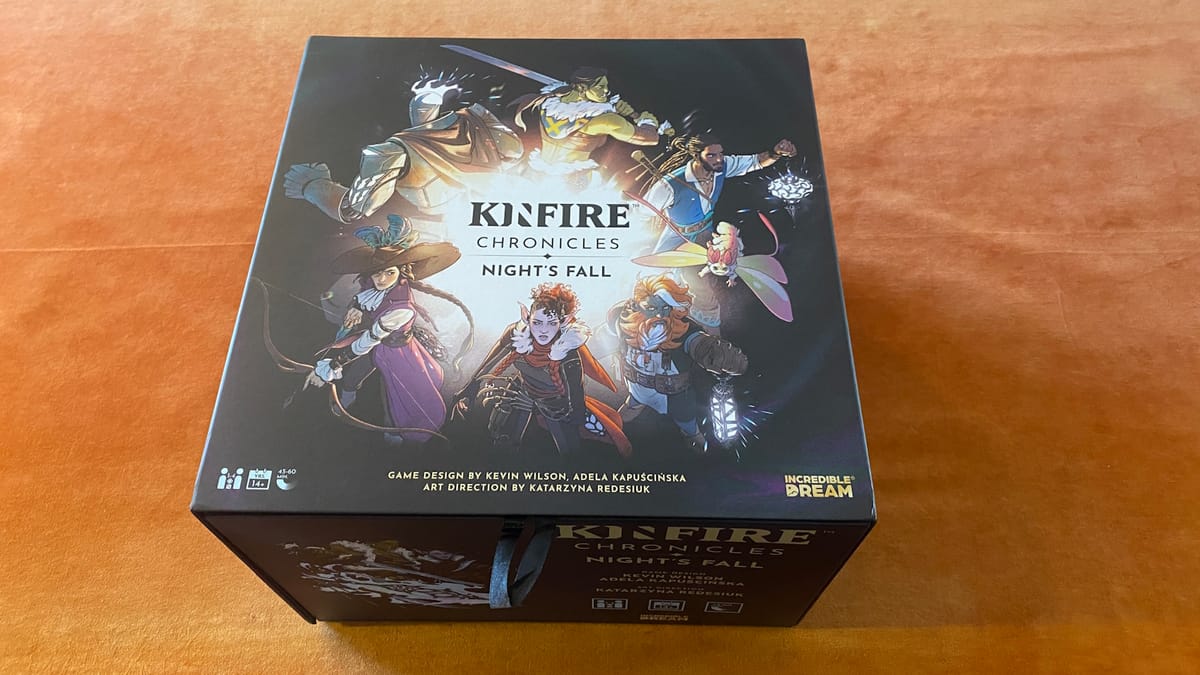
This review is based on an entire playthrough of Kinfire Chronicles, including every quest and side-quest, except for one that I did not unlock. I played with two characters, Khor and Valora. There will be no specific spoilers, but I will discuss mechanics that are introduced throughout the game.

A great team.
Art and Story
The character design is excellent. There are the usual fantasy races such as humans, elves, orcs, dwarves, and there are also some new races such as the Revenants. All of the player and non-player characters are interesting and detailed. There is a ton of diversity in the game, including multiple non-binary gendered characters. All of the art is gorgeous and is displayed everywhere, from component boxes to the hundreds of included cards.
The writing is extremely well done. The Dialogue is interesting and never dull, while the world setting and story arc are interesting and fairly unique. There are some unexpected twists and exciting moments during the main story line. Player characters are developed throughout the game both by the decisions they make and individual story discoveries they uncover. My main complaint about the narrative is that it is too brief. Particularly, after the last quest I wished there had been some more story to close out the campaign.
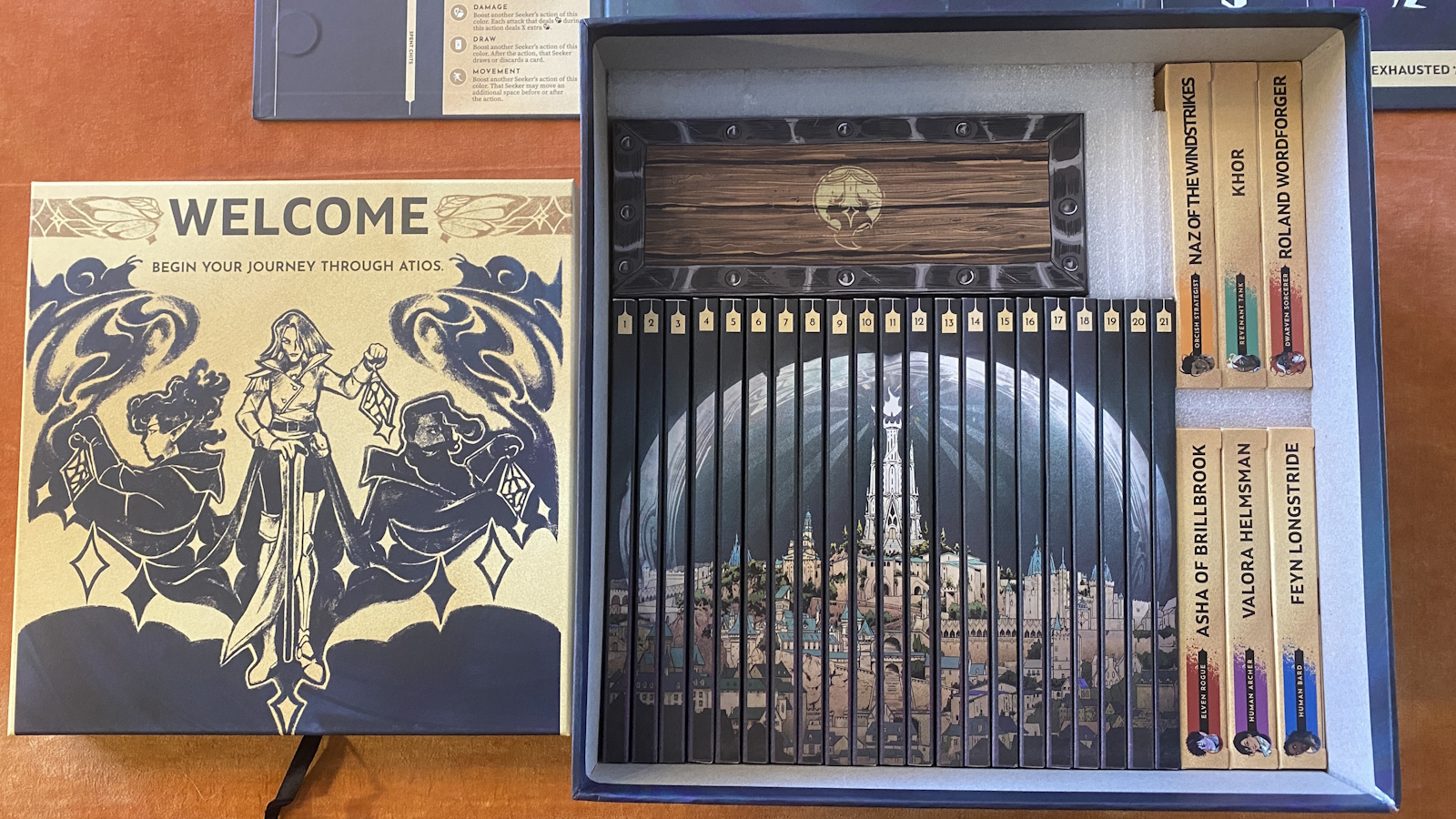
Prepare to embark on an epic journey.
Components
The component design is excellent. You can tell that a ton of thought went into all of the details when designing this game. There are many innovative features such as the magnetic box top becoming the game board. The rule books are split up and hidden inside quest boxes until you need them, along with many other components that are unnecessary up to that point. It is possible that they went a little overboard on some components. Coins, fate, and kinfire tokens are included in every quest box to make sure you always have the maximum you could possibly need. But, by the middle of the campaign I was flooded with them and they just kept coming.
Despite the excellent component design, there are a few quality issues. My box came damaged in the mail. While this is an extremely common occurrence with these large, heavy campaign games, good packing is something that needs to be considered. Cards are of decent quality, but have some warping and get chips fairly easily. The cards in quest boxes are in these four pocket sleeves that are thin and barely held closed by little stickers. They never worked and the cards were always spilled out inside every quest box. The absolute worst offender is the health dial axles. They barely stay together and are incredibly loose. I had to use clamps and glue to make them workable, and they’re still not very good. For a component that is used so extensively, these needed to be better.
There are some misprints on cards and the designers have been issuing errata, but it is fairly minor. Incredible Dream has been active online helping with any issues.
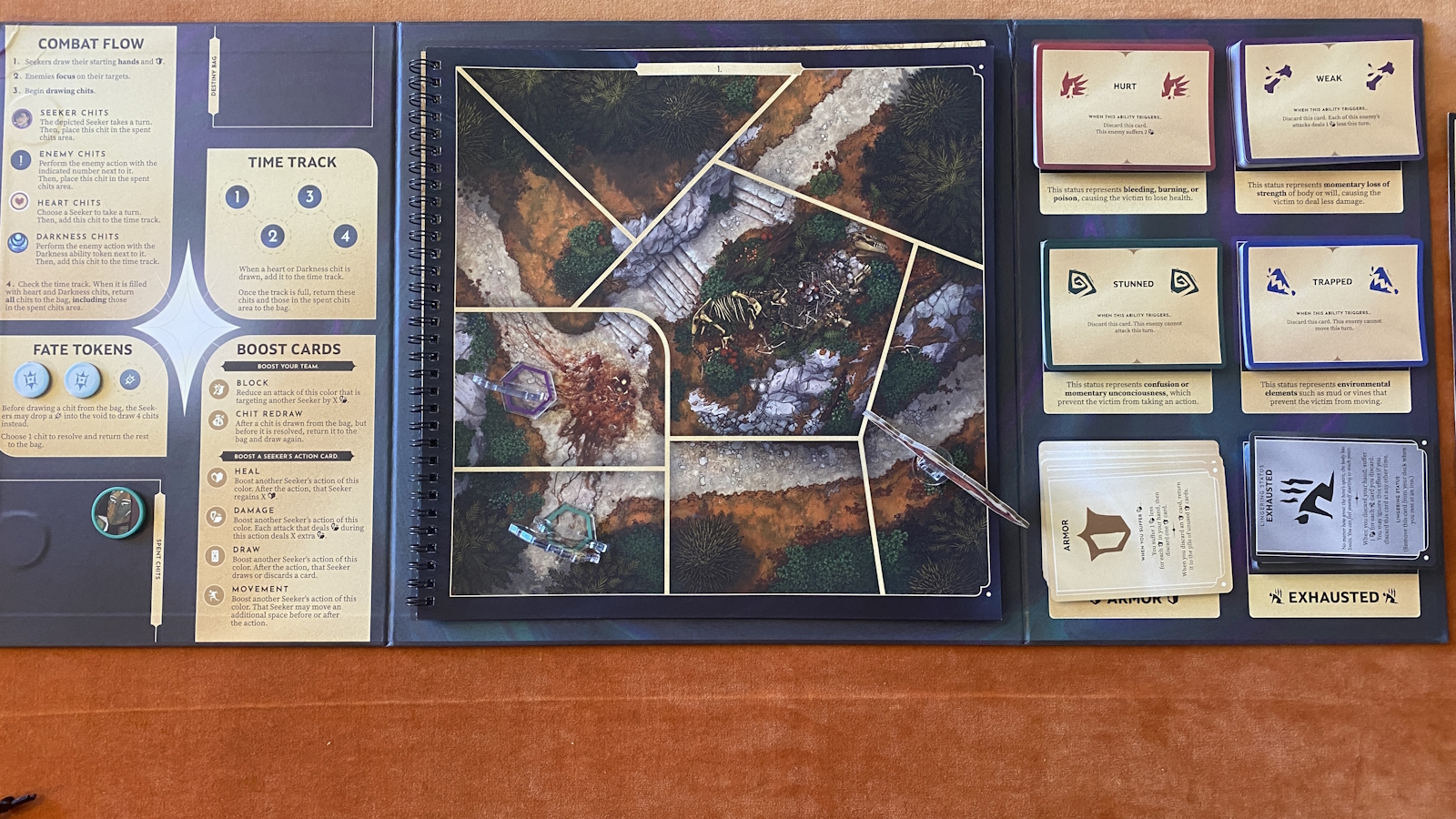
The box top becomes the game board.
Gameplay
After the first few instructional quests, each game session will have three parts. First there is an adventure portion, followed by a battle, and then finally town exploration. The battle is the longest portion, but overall a game session will be around 60 – 90 minutes if you take your time.
The adventure part of a quest will allow for many player decisions to direct the course of the adventurers. Many options will award kinfire (experience points) to characters if the chosen decision is aligned with that character’s desires. You can earn many memories based on your decisions that will affect the party in future quests. Characters will often make tests during this section by drawing cards in an attempt to get specific colors. A more agile character (a character with more green cards) will be more likely to succeed at tasks requiring agility. You can use your characters’ strengths to your advantage when making these decisions.
The town exploration at the end of a quest is pretty relaxed. You can often learn more about the world you are exploring while training, buying equipment, and resting. Exhaustion gained during quests is permanent until you rest. Without spoiling specifics, you will be given physical components to make town exploration quite immersive.
Combat uses the same basic mechanics throughout the game. You will always battle on a single map page and use the destiny bag initiative system. The tactical gameplay on the map is fairly basic. You will attempt to maneuver into advantageous terrain while avoiding dangerous obstacles. You can position yourselves to avoid area attacks while attempting to lure the enemies away from squishier characters.
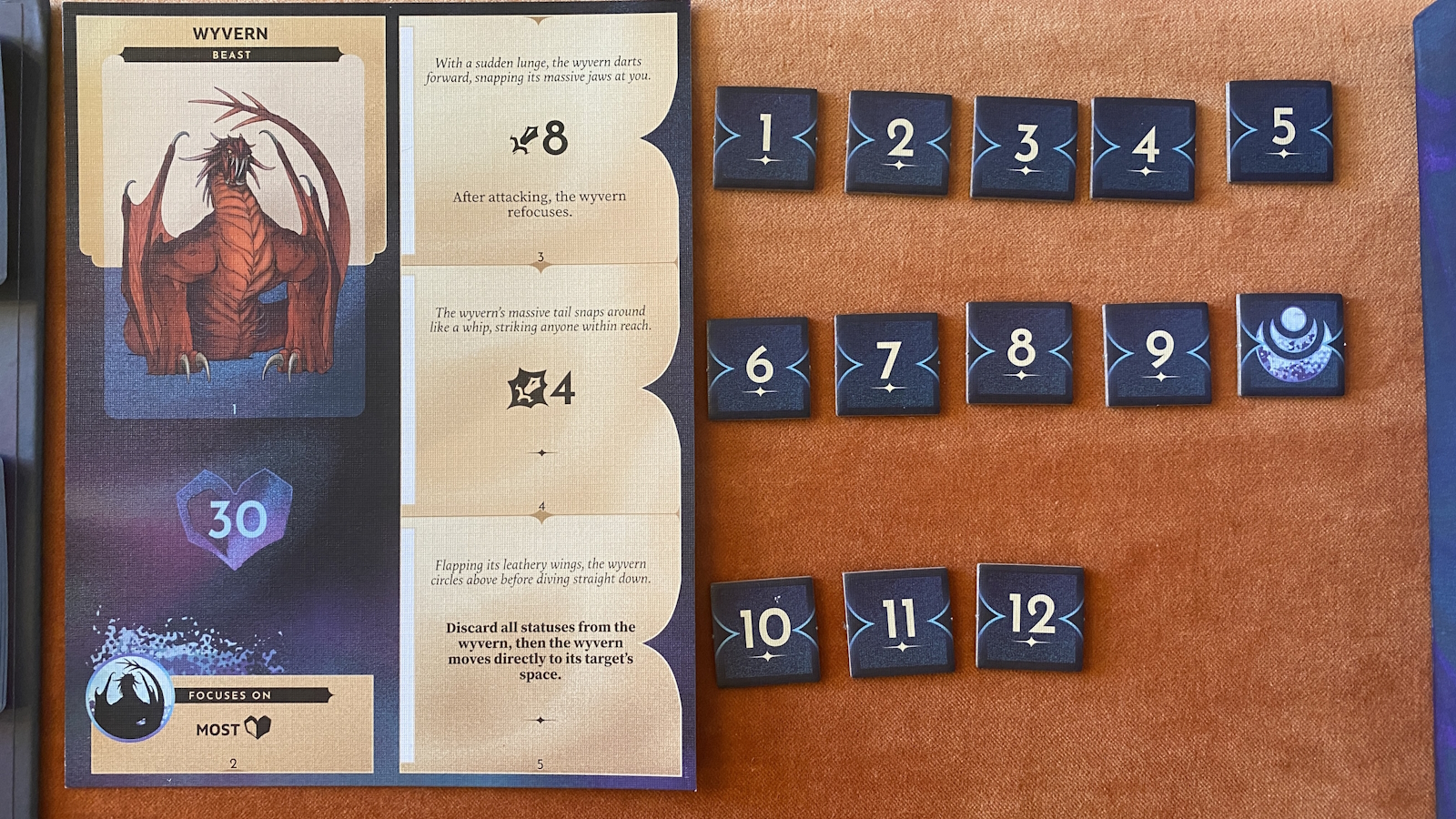
One of the first enemies you will have to face.
The real depth is in the card play. Based on how you’ve built your deck, you will be attempting to do as much damage as possible while taking as little as possible. Some characters have more defensive capabilities than others, so controlling who the enemy is focused on is a very important part of the game. Enemies can hit very hard if you don’t have enough defense. Knowing when to cycle your deck is also an important part of the game. Doing so, by playing all of your action cards, will refresh your hand and enable your lantern ability, but it also gets rid of any extra armor that you’ve built up. My game strategy was based around having Khor get as much armor and aggro as possible, rarely cycling, while Valora wanted to cycle as much as possible to use her ultimate ability over and over.
The boost system is also core to the game. Half of the cards in your deck are boosts and you don’t get to play them on yourself. They are free to play, however, so you want to use them as much as you can before cycling your hand. Of course, many of them have color requirements that you’ll need to take into consideration when building your deck.
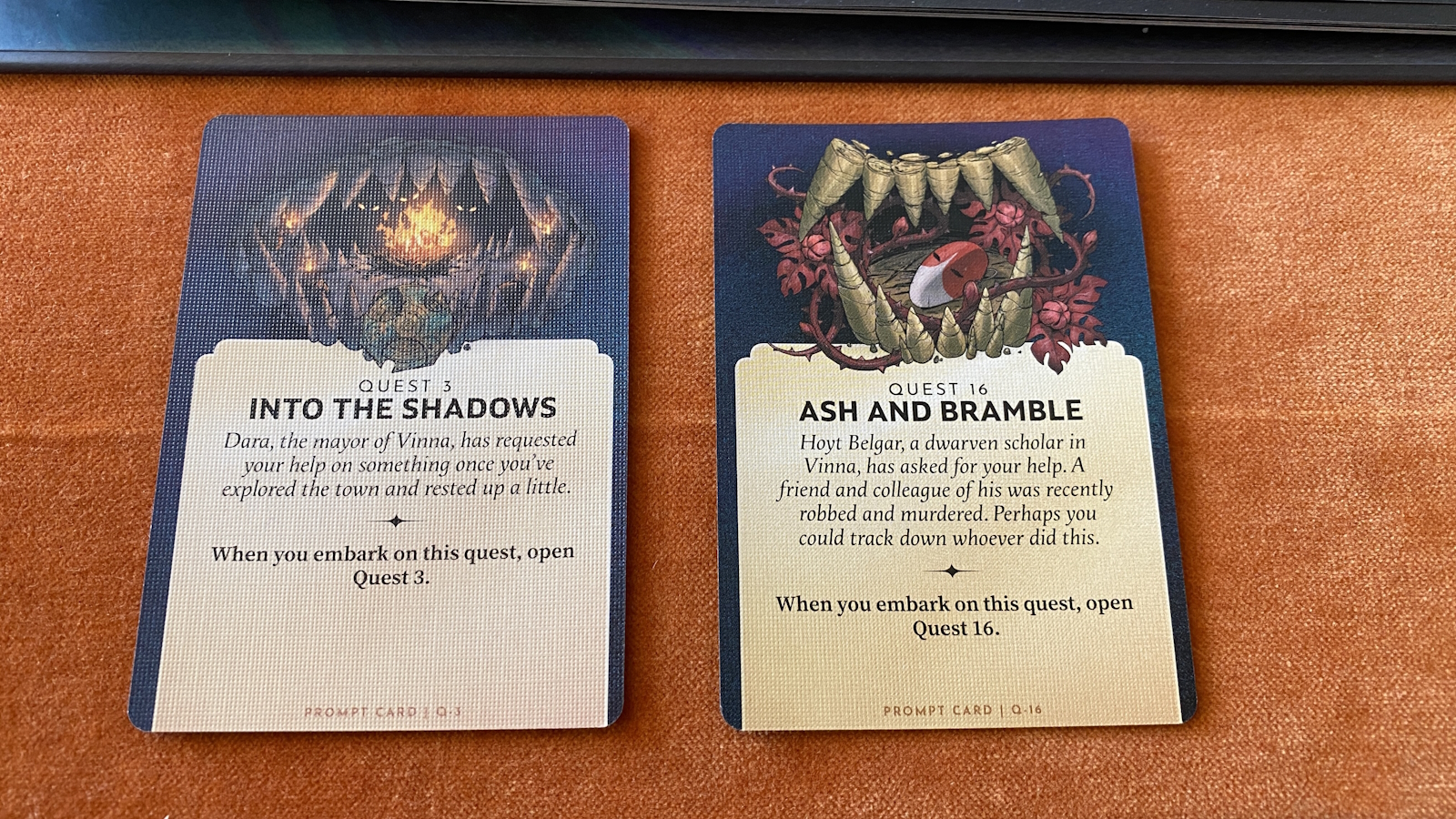
Which quest to embark on next?
The destiny bag is the source of my most mixed feelings about Kinfire Chronicles. The system is sleek and easy to use. You set it up at the beginning of the campaign and you never have to change it. It automatically balances based on the number of players and enemies and every pull from the bag is tense. Both enemies and players hit really hard, so you’re excited when you get a chance to swing and filled with dread when the enemy gets to attack. The problem is the potential for random streaks.
80% of the time the system works great. Battles swing back and forth, moving between players and enemies, until one side just barely wins. However, that other 20% of the time one side just stomps the other, and it isn’t enjoyable regardless of the result. If you just draw a chain of player tokens, you can kill off some of the enemies before they even get a chance to activate. There’s many enemy abilities in the game that I never got to see. On the other side, players often need a turn or two to prepare, or to spread out to avoid area damage. If you draw a chain of enemy tokens before any player tokens, you might lose the scenario without even getting a chance to act. In one scenario I drew five enemy tokens in a row, burning through my tank’s defense and killing them before I got to take any actions. That isn’t fun.
However, this can be mitigated. There are boosts that let you put a pulled token back in the bag and redraw. It took me half the campaign to realize how important this was and started building my decks with them in mind. The other way is through fate tokens, which you get up to three of per battle. Unfortunately, I hated the fate mechanic. Before drawing a token from the bag, you can spend a fate token to draw four and pick one. Every mechanic during a battle lets you see what the situation is, and then respond. But with fate tokens you’re supposed to spend them before seeing what is drawn. The token might not change anything that was going to happen already. And it is hinted early on that you don’t want to spend fate tokens as they are permanently added to a mysterious void box. If you miss the fact that a poor draw could cause a death, then you could lose a quest without any way to stop it. Eventually, I just started allowing fate tokens to be spent after drawing from the destiny bag. Thematically, though, the fate tokens and the ultimate use of the void box is really clever.
Battle design and variety is good. I found the maps to be mostly samey and bland, however there was a pretty great one that spiraled around into a long corridor that you had to fight your way through. The different fights had interesting mechanics and required different strategies. The swinginess of the destiny bag occasionally nullified some of that, though. There are some great boss battles and the final quest and boss of the game are super epic in every way.
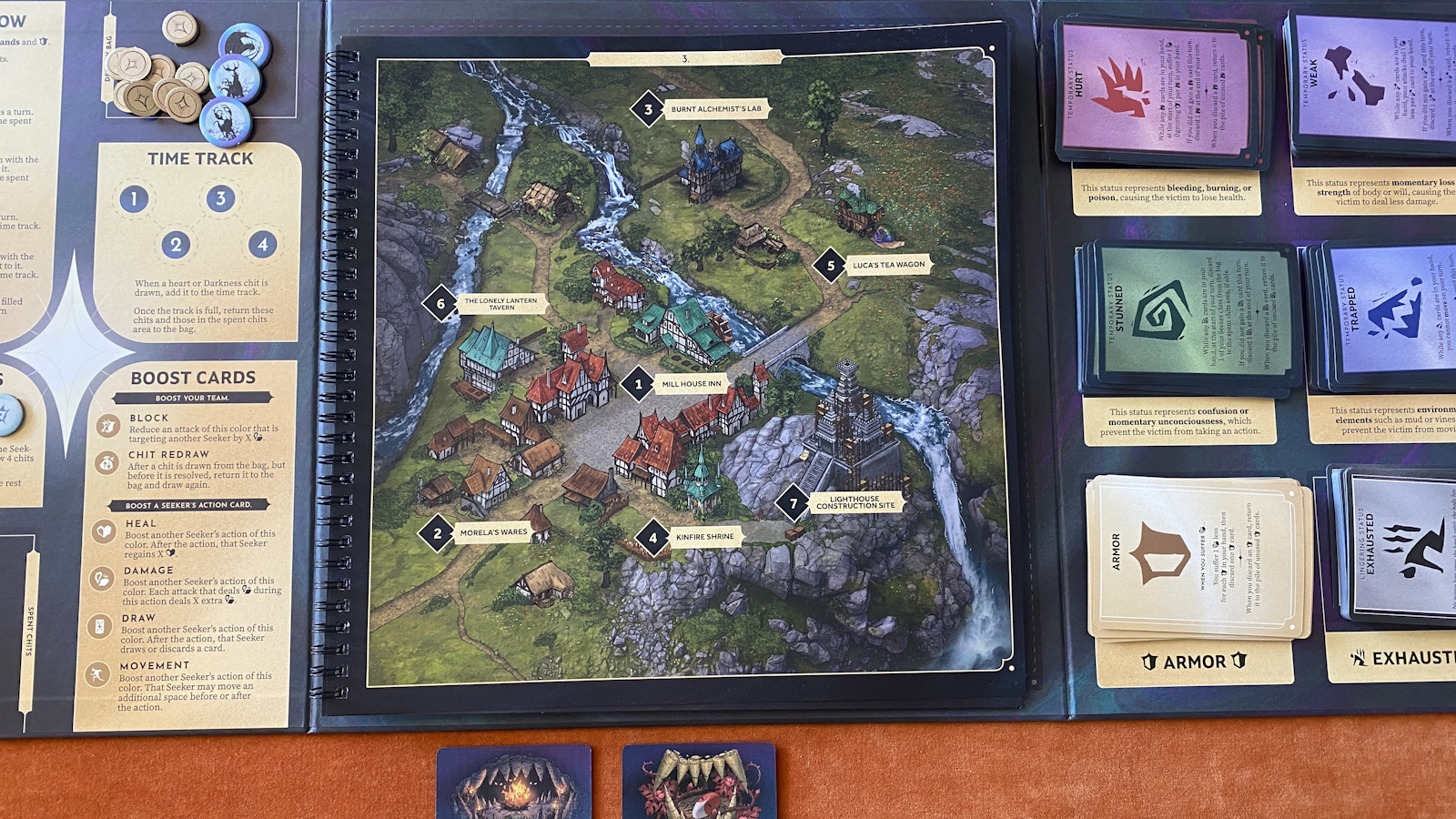
Sometimes you get to visit towns or other locations.
Player Scaling
While I only played with two characters, the game seems to scale quite well up to four players. The player team will always have 12 character tokens in the destiny bag, divided evenly amongst the characters. There are also three wild player tokens along with the 14 enemy tokens. So with more characters, each one is going to act less often. This is balanced out by having more boost cards in play. With only two characters, a maximum of one boost card will be played for each attack or defense. With four characters, that is bumped up to potentially three boost cards. Managing a character is simple enough that I didn’t have any trouble playing two characters on my own.
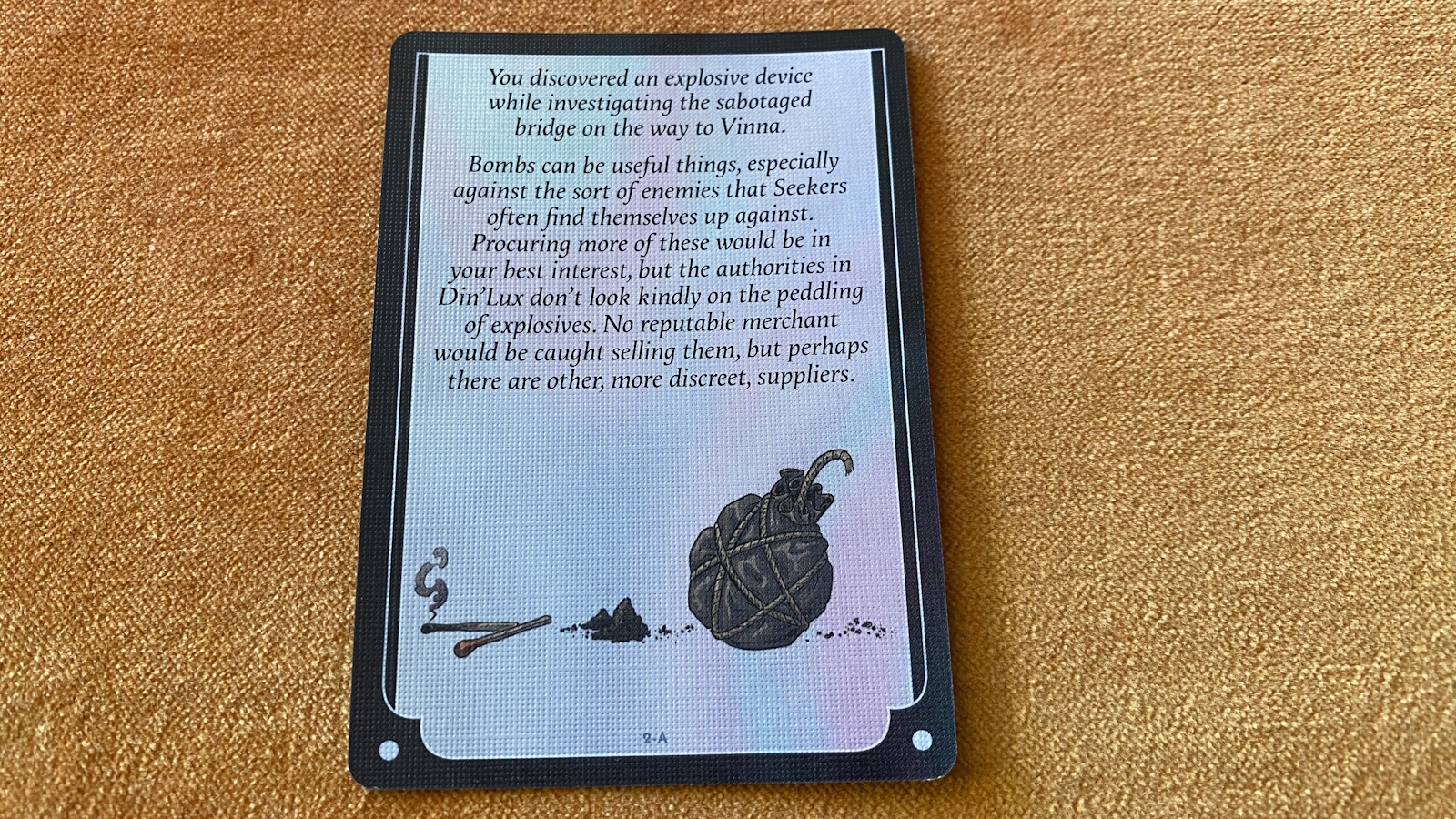
The game remembers your decisions.
Conclusion
I have completed multiple similar narrative campaign games such as Oathsworn and Vagrantsong. I’ve played many others such as ISS Vanguard, Etherfields, Tainted Grail, Arkeis, and Isofarian Guard. While most of these are excellent games, Kinfire Chronicles is one of the best ones. The story and writing are excellent, the characters are diverse, and the gameplay mechanics are good. One of the best things is how easy the game is to set up and play. Other games might have better mechanics or features, but if they are too long and complicated to ever actually get table time, then what does it matter? I could easily set up and play a game of Kinfire Chronicles in two hours, and unless there were some really unfortunate destiny bag draws, every session was a really fun time.
Kinfire Chronicles
Great
A super fun narrative campaign adventure game, good enough to challenge any of the other games of this type. Despite some potential issues with randomness, I highly recommend this to anyone who is looking for a solo or cooperative campaign to get into. Bring your friends.
Pros
- Great story and writing
- Interesting and diverse characters
- Easy and fun gameplay systems
Cons
- Randomness of the destiny bag
- Some poor component quality